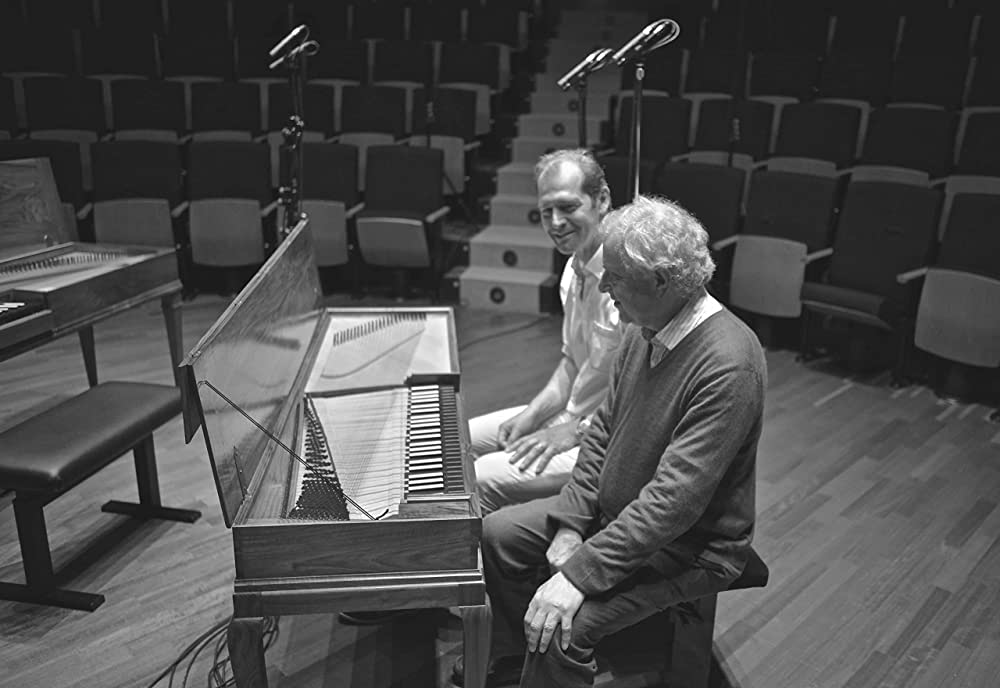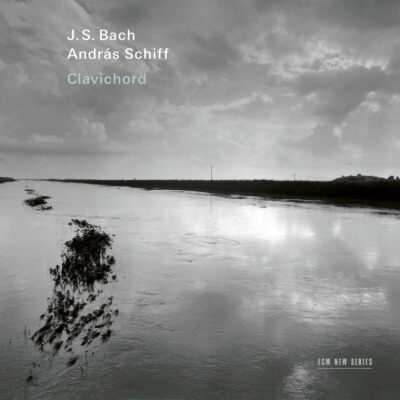by Steven Silverman
Published March 20, 2023
J.S. Bach András Schiff Clavichord. András Schiff, clavichord. “An Capriccio sopra la lontananza del fratello dilettissimo,” BWV 992; Inventions, BWV 772-786; Four Duets, BWV 802-805; Ricercar a 3 from “Das Musikalische Offer,” BWV 1079; Sinfonias, BWV 787-801; Chromatic Fantasia and Fugue, BWV 903. ECM 2635/36

Should we have mixed feelings when a prominent modern instrument practitioner makes a period instrument recording? Is this drive-by tourism? Something tantamount to cultural appropriation?
I would push back. When mainstream artists turn to period instruments, they are placing their imprimatur on the view that music ought to be played and heard on the instrument for which it was written. More important, they are contributing to greater awareness of how the music sounded in the ears of the composers and their audiences. This is all to the good for all musical communities. And the performers’ modern-instrument playing benefits from their new (or increased) awareness of the sound and feel of the original instruments. András Schiff indeed makes this point explicitly in his notes to the recording.
Schiff is no newcomer to period-instrument performance and practice. He made notable excursions into Viennese Classic-era repertoire on an 1820 Brodmann Fortepiano and recorded the Brahms B-flat Piano Concerto on a 19th century Blüthner.

His most recent recording is a healthy swatch of J.S. Bach on an unfretted clavichord—a copy of a 1743 Specken clavichord built by Boris Potvlieghe in 2003. An unfretted clavichord allows the performer to play in all keys and temperaments, unlike the fretted version, and it’s this type of clavichord on which Bach would have composed. (Indeed, some surmise that the Well-Tempered Clavier refers to this attribute of the unfretted clavichord.)
Clavichords date back to the 15th century and remained in production as late as the 1820s. To say they are subtle instruments understates significantly: the clavichord is virtually inaudible in any but intimate spaces, and it essentially cannot be heard in combination with any other instrument. Why then did J.S. Bach’s first biographer, Forkel, say that it was the master’s preferred keyboard instrument (excepting the pipe organ), and why was it Carl Phillip Emmanuel’s avowed favorite?
Unique among keyboard instruments, the player can continue to influence the sound of a note after it has been struck. This is because the brass blade (“tangent”) that contacts the string stays in contact with the string (unlike the plucking plectra on a harpsichord, or the rebounding hammer on a piano). By increasing or decreasing the pressure on the key, the volume and even the pitch of a note can be altered after it has begun. (This means the player must think about the pressure on each key throughout a note’s entire duration, not merely at the beginning and end of each stroke.)
The quasi-vibrato which can be imparted to the sound has a German name, bebung; one finds this effect notated as late as 1821 in the recitative to the arioso section of Beethoven’s Piano Sonata Op. 110 (Beethoven in fact owned a small clavichord which he used as a practice instrument; Mozart likewise owned a small clavichord).
The clavichord on Schiff’s new recording sounds something like a lute in its middle register, like a guitar in its low end and, at the very top, like a harp (and sometimes, when playing with a pronounced staccato, like an electronic instrument). The different registers produce inherent contrast. In addition, Schiff coaxes dynamics from the instrument, and so readily differentiates voices, as in the D minor and F major Duets (BWV 802 and 803) where the left-hand voice is allowed to dominate, and throughout “the Musical Offering” Ricercar.
He also manages crescendos (albeit within the restricted dynamic range of the instrument) as in the concluding part of the fugues of the Chromatic Fantasy and Fugue and the “Departure of the Beloved Brother Capriccio,” as well as in the F minor lament from the Capriccio. His use of bebung is most evident in the chordal interjections in the recitative section of the Chromatic Fantasy, where the effect is pronounced and highly expressive.
Schiff’s two-CD offering contains three larger works, the “Capriccio On the Departure of a Beloved Brother,” the 3-part ricercar from The Musical Offering, and the Chromatic Fantasy and Fugue, plus the complete two- and three-part inventions (Sinfonias), and the Four Duets from Klavierübung III.
The Chromatic Fantasy and Fugue gets a fine reading indeed; the Fantasy is just terrific. The passagework has the verve you would expect from a keyboard virtuoso like Schiff. His pacing is imaginative: instead of plunging into the triplets which follow the opening flourish, he begins slowly with overholding and accelerates organically. He ingeniously realizes the arpeggiated section in the middle of the movement, where arpeggios are taken at different rates of speed, some passing tones are added and some of the arpeggios are extended an extra octave. The concluding recitative, too, is eloquent—enhanced by use of bebung on the chordal interruptions—that builds, again organically, to a fine climax.
The Fugue is exciting with plenty of momentum, albeit a little on the relentless side, since the episodes where the texture thins to two voices are surely meant to be played more lightly than the surrounding material.
The other two large-scale works on this new recording—“Departure of the Beloved Brother Capriccio” and “the Musical Offering’s” 3-part Ricercar—are just as successful. These are both meandering works and Schiff sticks to the mark to minimize this discursiveness. I would prefer more freedom—the opening section of the Capriccio, for example, could already have a lamenting, halting character—but this is a matter of taste.
I found the Inventions and the Sinfonias less successful. Notwithstanding impeccable finger work, there is a rhythmic sameness to much of the playing. You start to hear every single beat.
For example, the lovely C minor and G minor Sinfonias are dancelike pieces (possibly sicillienes), but this quality is lost when he plays three equalized beats per bar rather than one to the bar. Schiff also consistently plays the hands precisely together, when some staggering (left hand ahead of right, or vice versa) would add needed expressivity and also remove beats. I think staggering would help throughout the mournful F minor movement of the “Departure of the Beloved Brother Capriccio.” It would likewise help at climactic points of sequences where there is a poignant harmonic change, e.g. in measure 21 of the G minor Sinfonia.
Schiff occasionally uses rubato, such as a slight lingering on the highest note in a phrase (for example the high B in measure 17 of the B minor two-part Invention, and the top notes of the initial sequences of the A minor Invention). I would have liked to hear more of this. I also would have liked to hear Schiff make more of the chromaticism which informs many of these pieces. The E major two part invention, for example, and the F minor Sinfonia have chromatic lines that tend to get lost in these readings because beats are equalized. The E major Invention is actually a notated stagger, where Bach is saying, in effect, “don’t play your hands together,” not “play each note exactly one sixteenth note apart.” The F minor Sinfonia, where falling half steps in one voice play off against a falling chromatic line moving at half the speed, also loses poignance and expressivity due to overly literal and regularized rhythm.
Schiff is also parsimonious with ornamentation. He adds some ornaments to the repeats of the E major two-part Invention, and the occasional ornament elsewhere, but could do a lot more. Bach actually made fair copies of the E-flat Sinfonia and C major two-part Invention showing ornamentation illustrating that, even though these are pedagogical pieces, he expected performers to ornament. (Schiff plays these fair copy versions, although omitting some of Bach’s ornaments in the Sinfonia). Discrete use of inegale in some scale passages (like the C major Sinfonia) would also add needed rhythmic variety.
All this said, András Schiff is a substantial artist, and his embrace and advocacy for period-keyboard instruments is praiseworthy. On much of this recording, however, I sense a reverence that results in constrained interpretations. The freedom and fire shown in his Chromatic Fantasy and Fugue could well be applied to other music on this recording.
Steven Silverman is a pianist and harpsichordist whose performances include concerts at Weill Hall in New York and the Salle Cortot in Paris. He and his wife, the violinist and violist Nina Falk, are co-founders of the Arcovoce Chamber Ensemble, now in its 23nd season, and for many years a resident chamber ensemble at Washington D.C.’s Phillips Collection.




